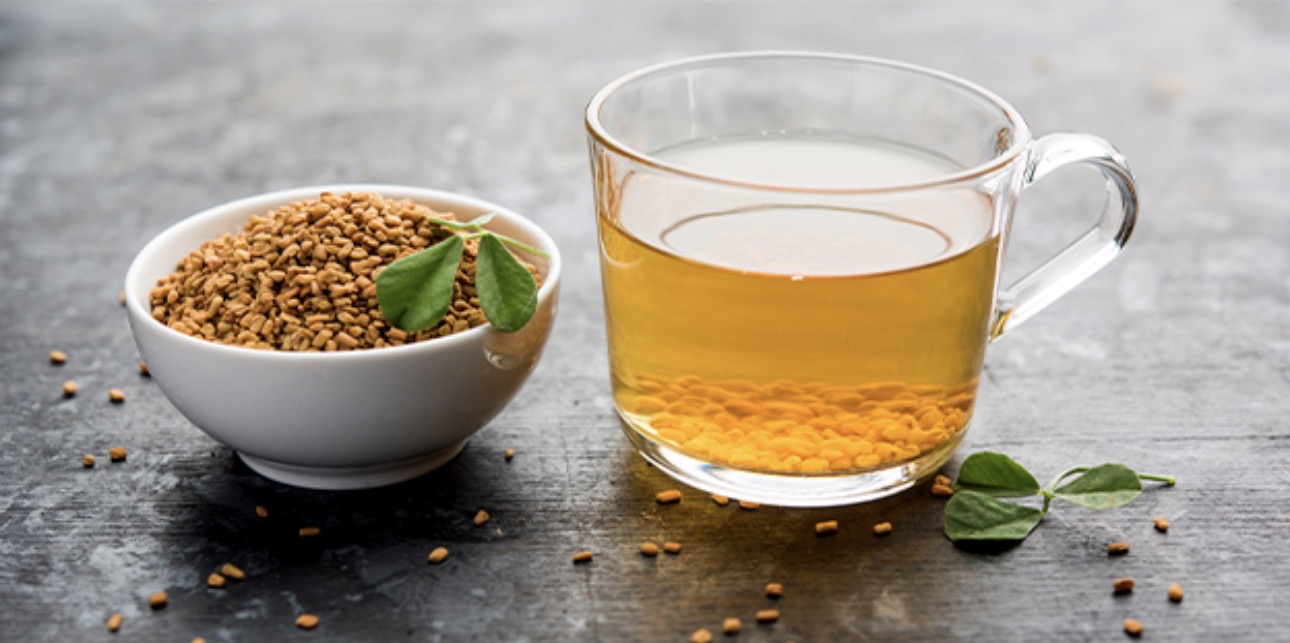Methi or fenugreek is a natural herbal remedy that helps lower blood sugar levels, especially for people with Type 2 diabetes, when used correctly and consistently.

Benefits of Methi
• Helps reduce fasting blood sugar
• Slows down carbohydrate absorption
• Improves insulin sensitivity
• Also supports cholesterol control
Ways to Use Methi
Soaked Methi Seeds (Most Common & Recommended)
How to prepare:
• 1 teaspoon of methi (fenugreek) seeds
• Soak in 1 glass of water overnight
How to take:
• Drink the water upon waking (empty stomach)
• You may also chew the soaked seeds
✅ Once daily
Methi Powder
How to prepare:
• Dry the seeds
• Grind into a fine powder
How to take:
• ½ teaspoon
• Mix with warm water or yogurt
✅ 1–2 times daily before meals
Methi Tea
How to prepare:
• Boil 1 teaspoon of methi seeds in 1–2 cups of water
• Strain after 10–15 minutes
How to take:
• Drink 1 cup before or after meals
✅ Once daily is enough
⚠️ Important Reminders
• Not a replacement for medication (Metformin, insulin, etc.)
• Do not exceed the recommended amount (maximum 2 tsp per day)
• Possible side effects:
• Bloating or gas
• Dizziness (if blood sugar drops too low)
• Diarrhea at the beginning
• If pregnant or with kidney problems → consult your doctor first
Tips for Better Results
✔️ Combine with a balanced diet
✔️ Avoid sugary foods and refined carbohydrates
✔️ Monitor blood sugar regularly
✔️ Include light exercise (walking 20–30 minutes daily)
(This is a general guide and is safe for most people with Type 2 diabetes.)
DAILY METHI (FENUGREEK) ROUTINE
For People with Type 2 Diabetes
MORNING (Upon Waking – Empty Stomach)
• Drink 1 glass of water with soaked fenugreek seeds
• You may chew the seeds
Preparation (Night Before):
• 1 teaspoon fenugreek seeds
• Soak in 1 glass of water overnight
BREAKFAST (30–45 minutes later)
• Balanced breakfast (protein + fiber)
• Avoid sugar, white bread, and pastries
LUNCH
• Regular diabetic-friendly meal
• Optional: Fenugreek tea (1 cup)
AFTERNOON / EVENING
• Light dinner
• Avoid eating very late at night
⚠️ IMPORTANT REMINDERS
• Not a replacement for diabetes medication
• Safe if limited to 1–2 tsp of methi per day
• Monitor blood sugar closely, especially during the first week
• If dizziness or very low blood sugar occurs → stop and consult a doctor
QUICK CHECKLIST
☐ Methi soaked overnight
☐ Taken in the morning
☐ Balanced meals
☐ Avoid sugar
☐ Blood sugar checked
☐ Light activity (walking)
Paano Gamitin ang Methi (Fenugreek) para sa may Type 2 Diabetes
Ang methi o fenugreek ay isang natural na halamang-gamot na nakakatulong pababain ang blood sugar, lalo na sa may Type 2 diabetes, kapag ginamit nang tama at regular.
Mga Benepisyo ng Methi
• Nakababawas ng fasting blood sugar
• Pinapabagal ang pagsipsip ng carbohydrates
• Pinapabuti ang insulin sensitivity
• Nakakatulong din sa cholesterol control
Mga Paraan ng Paggamit
Binabad na Methi Seeds (Pinaka-karaniwan)
Pinaka-recommended
Paano gawin:
• 1 kutsarita ng methi seeds
• Ibabad sa 1 basong tubig overnight
Paano inumin:
• Inumin ang tubig pagkagising (empty stomach)
• Pwede ring nguyain ang binabad na buto
1 beses araw-araw
Methi Powder
Paano gawin:
• Patuyuin ang buto
• Gilingin hanggang maging pulbos
Paano inumin:
• ½ kutsarita
• Ihalo sa maligamgam na tubig o yogurt
1–2 beses sa isang araw bago kumain
Methi Tea
Paano gawin:
• Pakuluan ang 1 kutsarita ng methi seeds sa 1–2 basong tubig
• Salain pagkatapos ng 10–15 minuto
Paano inumin:
• 1 tasa bago o pagkatapos kumain
Pwede 1 beses araw-araw
⚠️ Mahahalagang Paalala
• Hindi kapalit ng gamot (Metformin, insulin, atbp.)
• Huwag sosobra (max 2 tsp/day)
• Posibleng side effects:
• kabag
• hilo (kapag bumaba ang sugar)
• pagtatae sa simula
• Kung buntis o may kidney problems → kumonsulta muna sa doktor
Tips para Mas Epektibo
✔️ Sabayan ng balanced diet
✔️ Iwas sa matatamis at refined carbs
✔️ Regular na monitor ng blood sugar
✔️ May kasamang light exercise (walking 20–30 min)
(General guide ito at safe sa karamihan ng may Type 2 diabetes.)
DAILY METHI (FENUGREEK) ROUTINE
Para sa may Type 2 Diabetes
UMAGA (Pagkagising – Empty Stomach)
EN:
• Drink 1 glass of water with soaked fenugreek seeds
• You may chew the seeds
TL:
• Inumin ang 1 basong tubig na may binabad na methi seeds
• Pwede ring nguyain ang mga buto
Preparation (Gabi pa lang):
• 1 kutsarita methi seeds
• Ibabad sa 1 basong tubig overnight
ALMUSAL (30–45 mins after)
EN:
• Balanced breakfast (protein + fiber)
• Avoid sugar, white bread, pastries
TL:
• Kumain ng balanseng almusal (protina + gulay/fiber)
• Iwasan ang matatamis at puting tinapay
TANGHALI
EN:
• Normal diabetic-friendly meal
• Optional: Fenugreek tea (1 cup)
TL:
• Karaniwang pagkain para sa diabetic
• Optional: 1 tasa ng methi tea
HAPON / GABI
EN:
• Light dinner
• Avoid eating very late at night
TL:
• Magaang hapunan
• Iwasang kumain ng sobrang gabi
⚠️ IMPORTANT REMINDERS
• Hindi kapalit ng diabetes medication
• Safe kung 1–2 tsp lang ng methi/day
• I-monitor ang blood sugar lalo na sa unang linggo
• Kung may hilo o sobrang baba ng sugar → itigil at kumonsulta
QUICK CHECKLIST
☐ Methi soaked overnight
☐ Ininom sa umaga
☐ Balanced meals
☐ Iwas sugar
☐ Blood sugar checked
☐ Light activity (walking)
#Type2Diabetes
#Fenugreek
#MethiSeeds
#BloodSugarControl
#NaturalRemedy
#DiabetesCare
#HealthyLifestyle
#WellnessTips
@HaveFunKeepFit
By Coach Noel